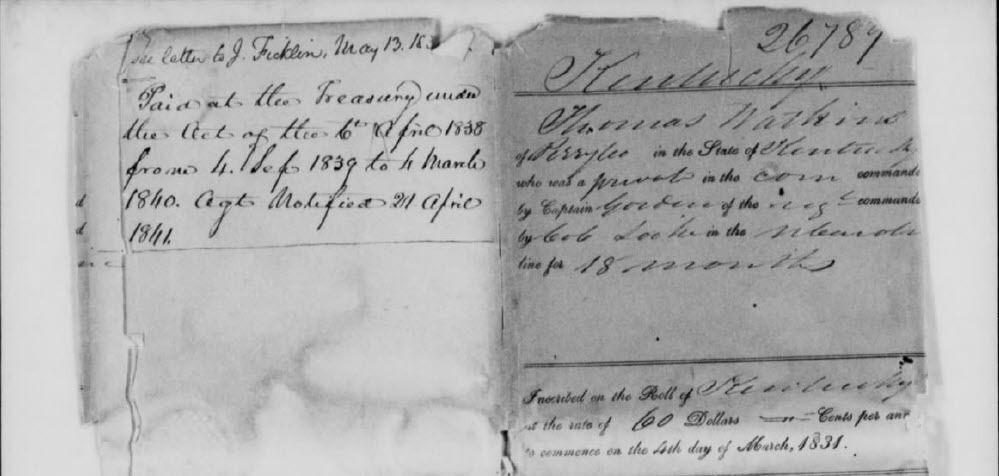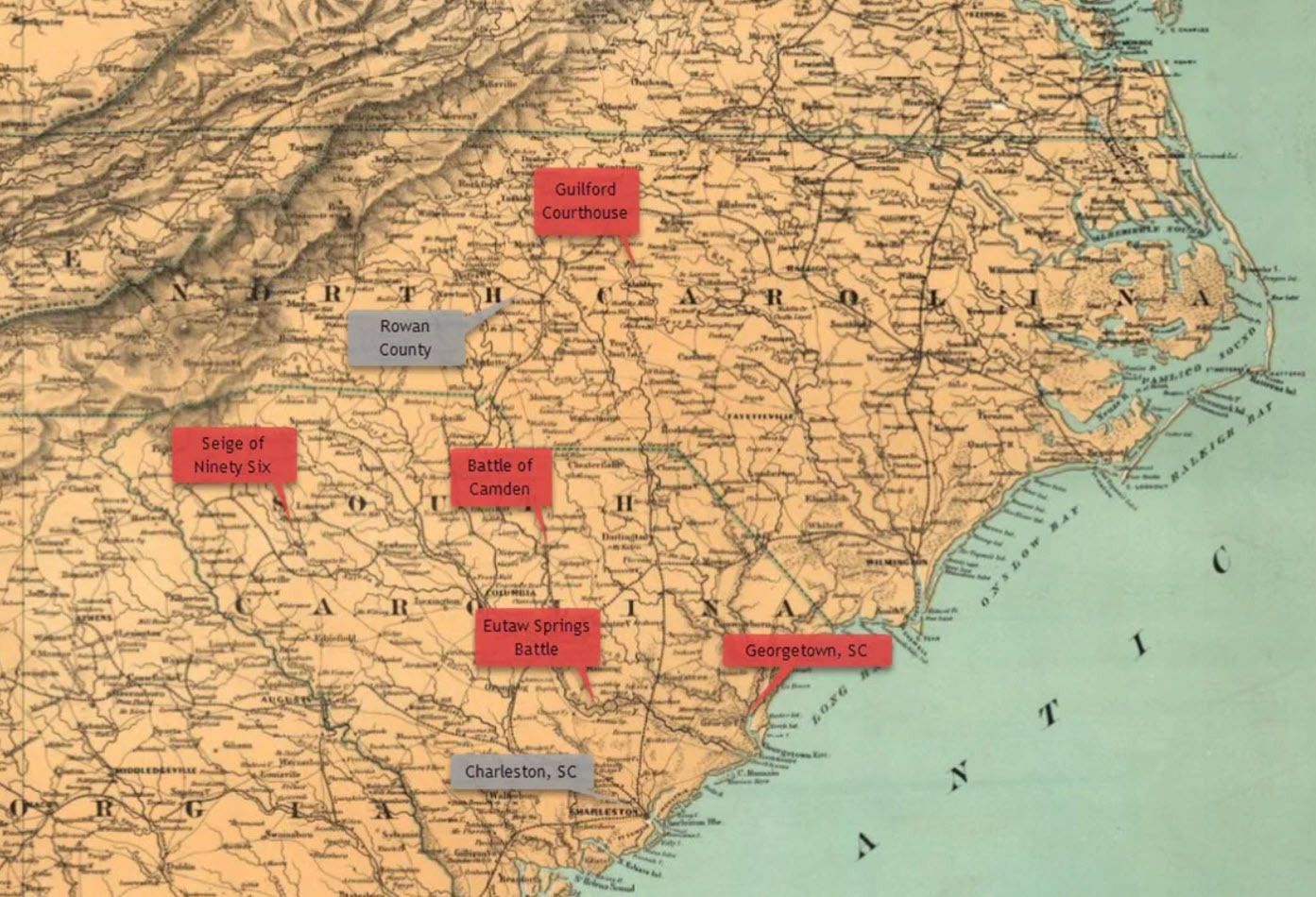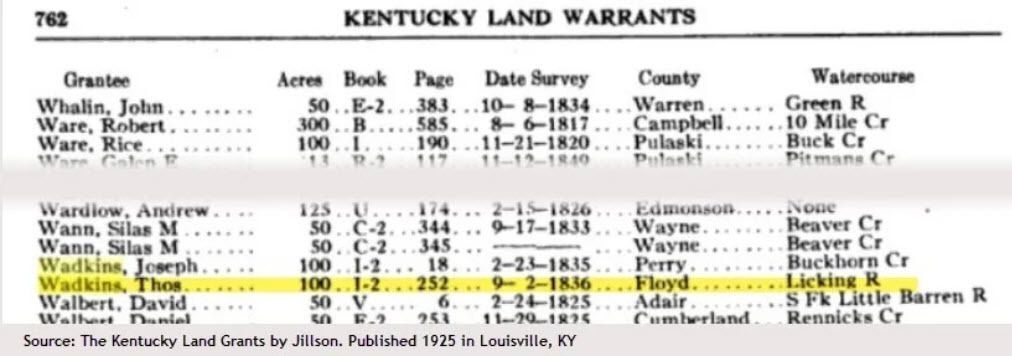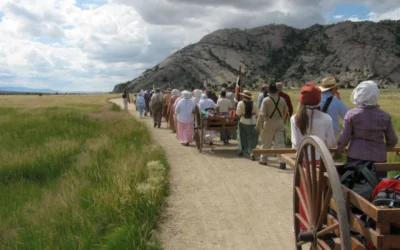Finding Revolutionary War Records
When the Revolutionary War started, Kentucky was still part of Virginia. After the war concluded, many families came to Kentucky. Some because they were given a land warrant, others to simply begin their lives. It is amazing how many records from that conflict have survived.
Before moving to Floyd County, Kentucky, in the early 1800s, my sixth great-grandfather, Thomas Watkins, served in the Revolutionary War. Here’s what I know of his life as a Revolutionary War soldier.
Enlisting in the North Carolina Militia
Around 1751, Thomas Watkins was born in the British American colony of North Carolina. George II ruled Great Britain and the American colonies, making the Watkins family his loyal subjects. Another twenty-five years would pass before North Carolina would be a state.
In 1776, North Carolina declared independence from Great Britain and joined the Continental Congress. Most colonists were happy for the relationship to end. Many of the residents resisted the taxes imposed by King George III when the colonies had no representation. This event led to the start of the Revolutionary War.
While most of the battles were fought in the north, by 1779, General Charles Cornwallis brought the battle to North Carolina. The North Carolina Militia drafted the 30-year-old Thomas Watkins into the Wilkes County Regiment to serve for nine months.
On 17 February 1834, when he applied for his military pension, Watkins recounted his three years of service. The interview for the pension application (W6779) provides us with a vivid view of his military life. Thomas Watkins was 83-years-old when he discussed events that had happened 40 years prior.

Pension papers for Thomas Watkins Source: US National Archives
Soldier’s Life in the Revolutionary War
Like many of the men in the troop, Watkins was not a trained soldier. Most likely he was a common laborer or worked on his family farm. Many historians discuss how the militia lacked training, equipment, and supplies. It had to be scary for these men knowing they were facing the world’s most elite fighting force – the Royal Army of Great Britain.
In the interview, Watkins said his troop leadership changed frequently, so it was difficult to know who was in charge. When mustered into service, he states it was with Captain Charles Gordon and served with Colonel Frances Locke of the Rowan County Regiment. He also served under Lt. Colonel James Miller (Rutherford County Regiment) and Colonel Francois DeMalmedy (NC Light Dragoons).
There were many battles he mentioned as shown on the map below. As you can see from the locations, these men marched long distances. These sites were 100 to 200-miles apart. At one point, he states, they had to rest for a week after marching to a South Carolina fort.
It must have been difficult to stay motivated. All of these major battles resulted in a loss with many soldiers meeting their end. It was clear the British had a better army.

Significant Battles in the Carolinas During 1870s Source: Author’s Collection
Second Tour with the South Carolina Militia
After nine months of service, Watkins was discharged while stationed in South Carolina. Like many other North Carolinians, he re-enlisted for eighteen months in the South Carolina Militia. He commented that it was too dangerous to return home. There were many Tories (what he called the British soldiers) located throughout the state who would likely take them as prisoners or kill them.
He characterized his remaining service as more skirmishes than battles. Most of his descriptions were guarding prisoners, patrolling the river near Georgetown, South Carolina, to prevent the British from causing further mayhem, and long marches through South Carolina. He added the British killed, hung, or jailed Whigs, who were colonists who supported independence.
As the war was winding down, many soldiers were waiting in South Carolina so they could be discharged. During the winter of 1782, he was so ill he spent time in the Charleston hospital. He didn’t say why he was in the hospital, but I imagine that it must have been severe. The war was complete by 1783.
Other Genealogical Clues from Interview
In the pension application, he verifies his age is eighty-three. He said that he considered Rowan County, NC, home but had since lived in Floyd County, KY. Other witnesses were there to validate his character and his service.
- Reverend Ezekiel Stone and Reuben Marshall, both of Floyd County, declared Watkins was 83 years old and served in the Revolutionary War.
- Revolutionary War veteran John Hall (Application S30451), of Perry County, KY, who was 79-years-old, served during 1781-82 with Watkins. He stated Watkins was a good and faithful soldier. In 1783, he was aware that Watkins was in Georgetown, SC.
- Ezekiel Patrick (Application R7996) said he had known Watkins nearly all his life. They had lived in Rowan County together. Patrick did not serve all the time with Watkins but was able to verify the basic facts of the NC State Militia. They were both “nine-month men” and not in the regular militia. Patrick also mentioned his two brothers were taken prisoner during the war. I was not able to verify this information and Patrick’s application was rejected.

Thomas Watkins land grant from the Kentucky Land Warrants Book.
This post was extracted from the Kentucky Family Stories Blog. You can read the entire post here: Private Thomas Watkins Role in Defeating the Elite Tory Army
References
The following resources are helpful when searching for Revolutionary War veterans. These resources are free to use. There are many other places to find records.
- Pamphlet: Revolutionary War Pension and Bounty Land Warrant Application Files (M804)
This publication from the US Government details when pensions were granted and how they were administered. - Southern Campaigns Revolutionary War Pension Statements & Rosters
This website contains the military pension applications for many southern soldiers. Even if your grandfather did not submit an application, he may be discussed by another man during the interview. - FamilySearch offers several databases from the American Colonies and state militias including the United States Revolutionary War Rolls 1775-1783.
- Kentucky Revolutionary War Soldiers and Patriots Book
Alice Fobister compiled this index of soldiers with their vital statistics. - Daughters of the American Revolution has a large database of soldiers with genealogical information.
- Sons of the American Revolution also maintains a large database of veterans with genealogical information.



